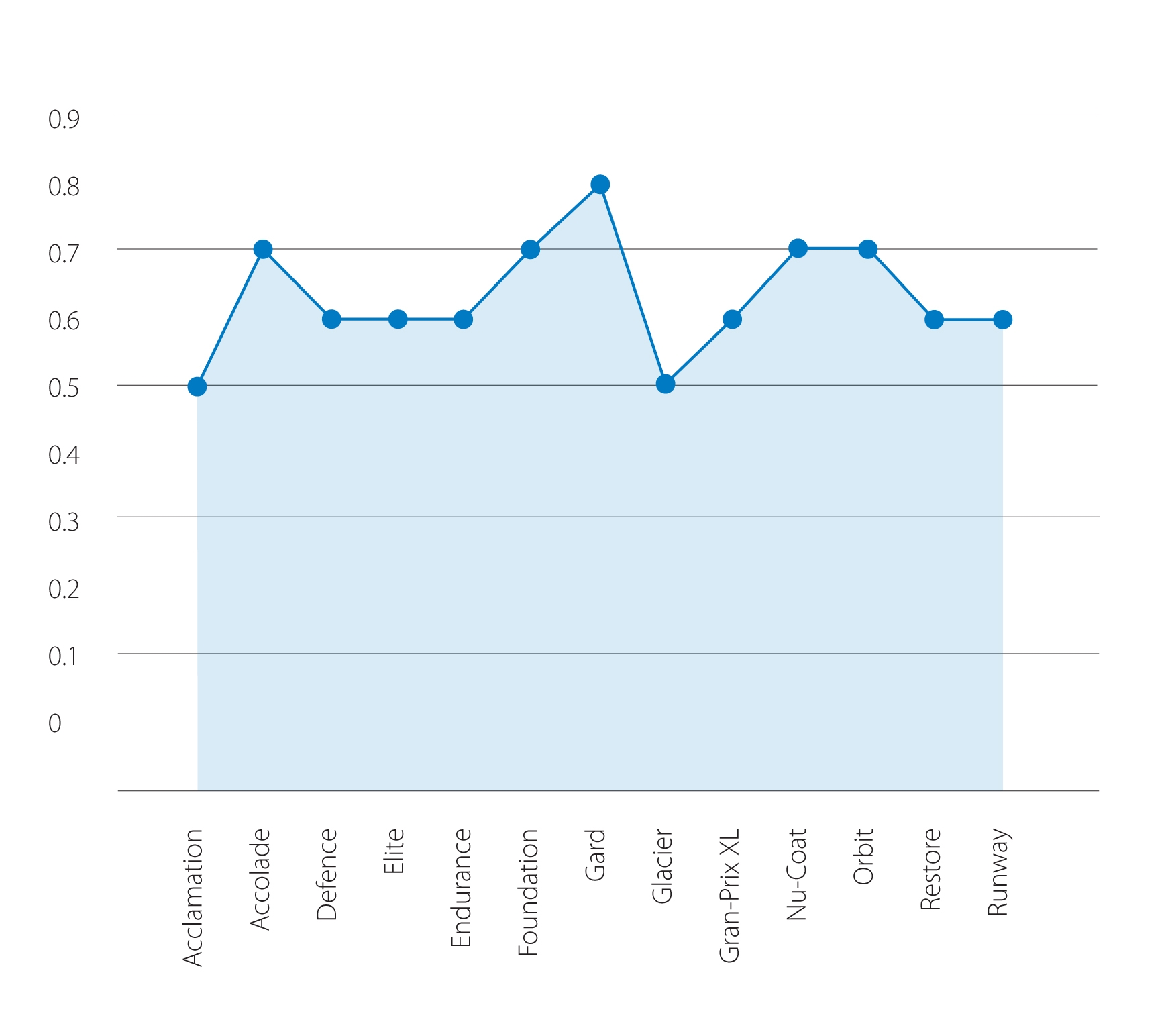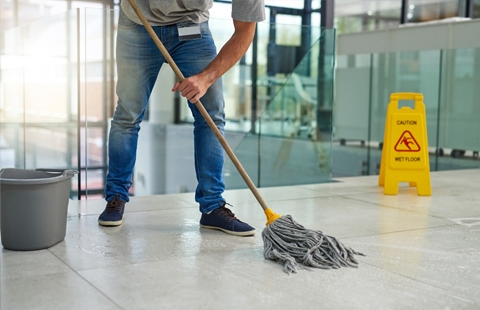Slip & Fall Accidents
How Safe Are Your Floors?
Pratfalls are only funny in movies. In reality, slip and fall accidents can result in significant injuries and even litigations. Same-level slips, trips and falls are actually the leading cause of workplace injuries. In Canada, more than 40,000 workers get injured annually due to slip and fall accidents. Apart from the cost incurred for the “lost-time” and workers’ compensation; law suits for such injuries can run for hundreds of thousands of dollars to compensate for their medical bills, lost wages, pain and suffering.
Many facility owners don’t realize how slippery their floors are until someone slips and falls.
Common Causes
Falls can be prevented with a bit of diligence. The causes of slip and fall accidents can vary. The most common ones encountered in the workplace are:
- Surface Conditions: According to the National Floor Safety Institute, 55% of all slip and fall accidents are caused by hazardous walking surfaces. These include uneven floors, damaged/loose flooring or carpeting, and wet surfaces due to the weather, spills or cleaning.
- Environmental Conditions: Many slip and fall accidents are the result of unsafe working conditions. Obstacles such as clutter/debris or trash on the floors, cords across the walkway, poor lighting making visibility difficult, and improper transition from carpet to flooring can easily lead to accidents.
- Weather Conditions: Weather is unpredictable, but being aware of the risk it brings to your flooring is crucial. Snow, ice, and rain can quickly turn floors into slick surfaces. Without proper signage or clean up, you are just waiting for an accident to happen.
- Negligence/Improper Training: Many slip and falls accidents take place at work. It is the employer’s responsibility to provide proper training for their staff to prevent accidents.
Who is to Blame?
You can’t blame the worker for being clumsy, careless or accidentprone. Employers are legally required to take all necessary steps and precautions to prevent accidents. It’s the law. Employers can easily be found guilty of negligence if they fail to put adequate warning signs around hazards (ex. warn that floor is wet, uneven, or if an object is on the floor surface and could cause someone to trip).
Having a proper preventive program in place is key to protecting
both your employees and yourself. You can easily prevent slip and fall
accidents by:
- Taking care of wet and slippery surfaces. Reduce the risk of slip and fall accidents by mopping up wet floors, removing snow, and using walk-off mats in the entrance. Displaying “wet floor” signs and mopping up spills immediately will ensure a safer environment.
- Removing environmental factors such as cords, trash and clutter in order to keep the pathways clean and orderly.
Providing adequate lighting will increase the visibility. - Investing in properly training your staff on adequate floor maintenance and signage. Knowing the Coefficient of Friction will help you determine how safe your floor finish really is.
Static Coefficient of Friction
The coefficient of friction (COF) is a mathematical term used to describe the effect of dragging one surface (shoe sole material) over another (flooring surface). It’s a method of measuring the ability of a surface to resist sliding or slipping. Knowing the COF of your floor finish demonstrates your responsibility towards preventing slip and fall accidents.
For a floor surface to be deemed as “safe”, the floor finish must have a minimum COF of 0.5. The COF rating goes as follows:
- Equal to or greater than 0.6 — Excellent friction.
- Equal to or greater than 0.5 — Adequate.
- Equal to or less than 0.4 — Caution necessary.
By using such products, you not only show your company’s concern for the condition of your floors, but also for the safety of the people using them.
Static Coefficient of Friction Results
| Floor Finish | Static Coefficient of Friction |
|---|---|
| Acclamation | 0.5 |
| Accolade | 0.7 |
| Defence | 0.6 |
| Elite | 0.6 |
| Endurance | 0.6 |
| Foundation | 0.7 |
| Gard | 0.8 |
| Glacier | 0.5 |
| Gran-Prix XL | 0.6 |
| Nu-Coat | 0.7 |
| Orbit | 0.7 |
| Restore | 0.6 |
| Runway | 0.6 |
* These tests were conducted on May 23, 2018. ASTM D 2047 - Standard Test Method for Static Coefficient of Friction of Polish-Coated Flooring Surfaces as Measured by the James Machine. Please note that any floor surfaces can become slippery when wet or improperly maintained. These tests were conducted under ideal laboratory condition and intervening forces (such as moisture and debris) could affect the results on actual floors.


Why risk slip and fall accidents? Protect yourself, your employees and your floors with Dustbane products.






